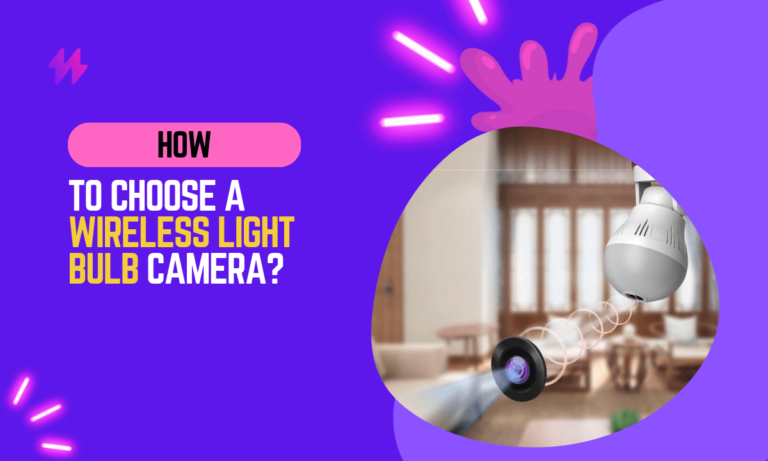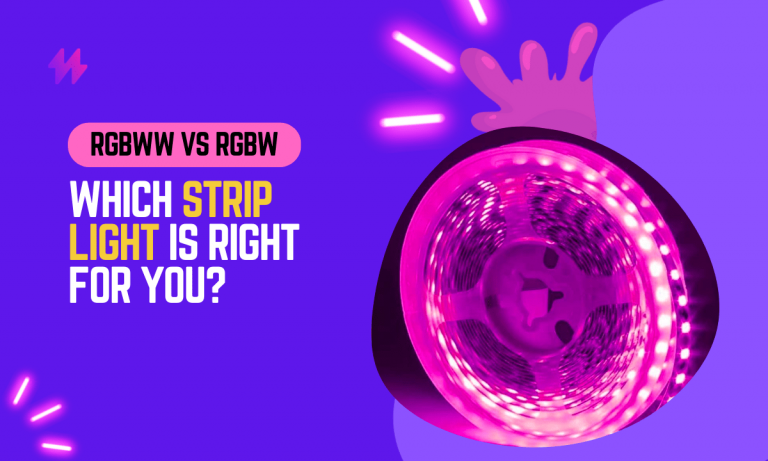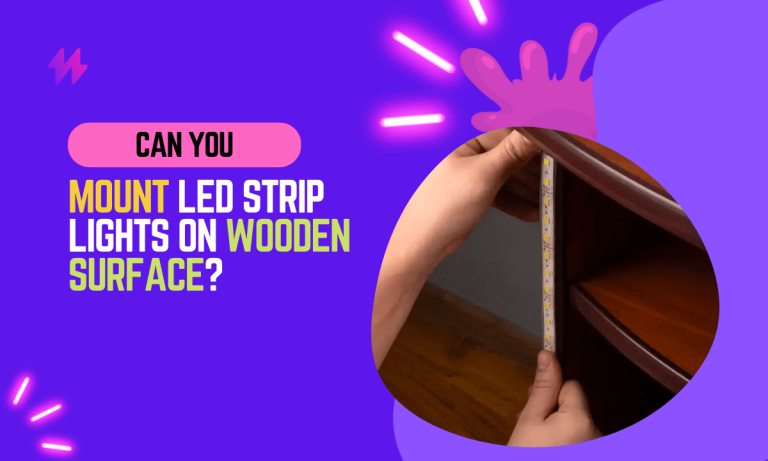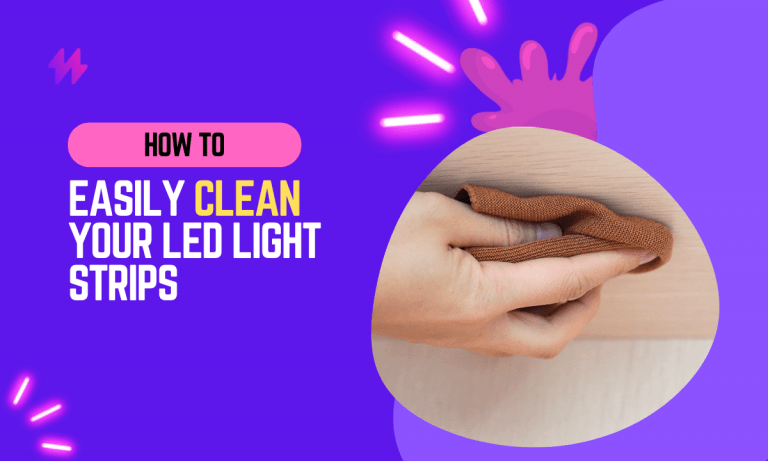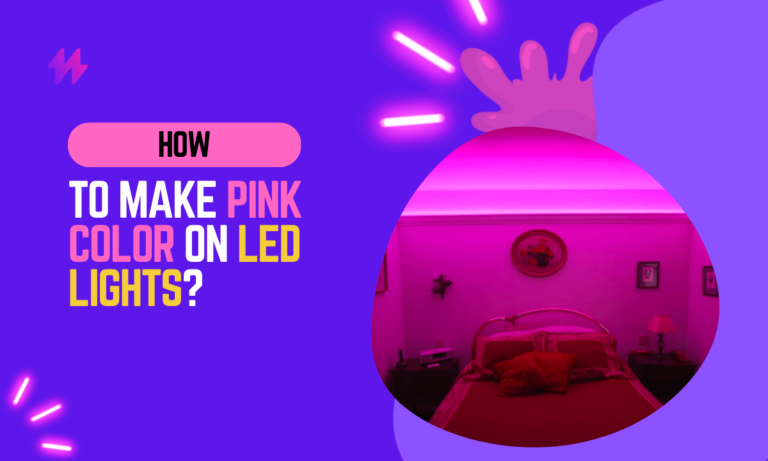Can LED Lights Be Left On 24/7 And Why You Shouldn’t Do It?
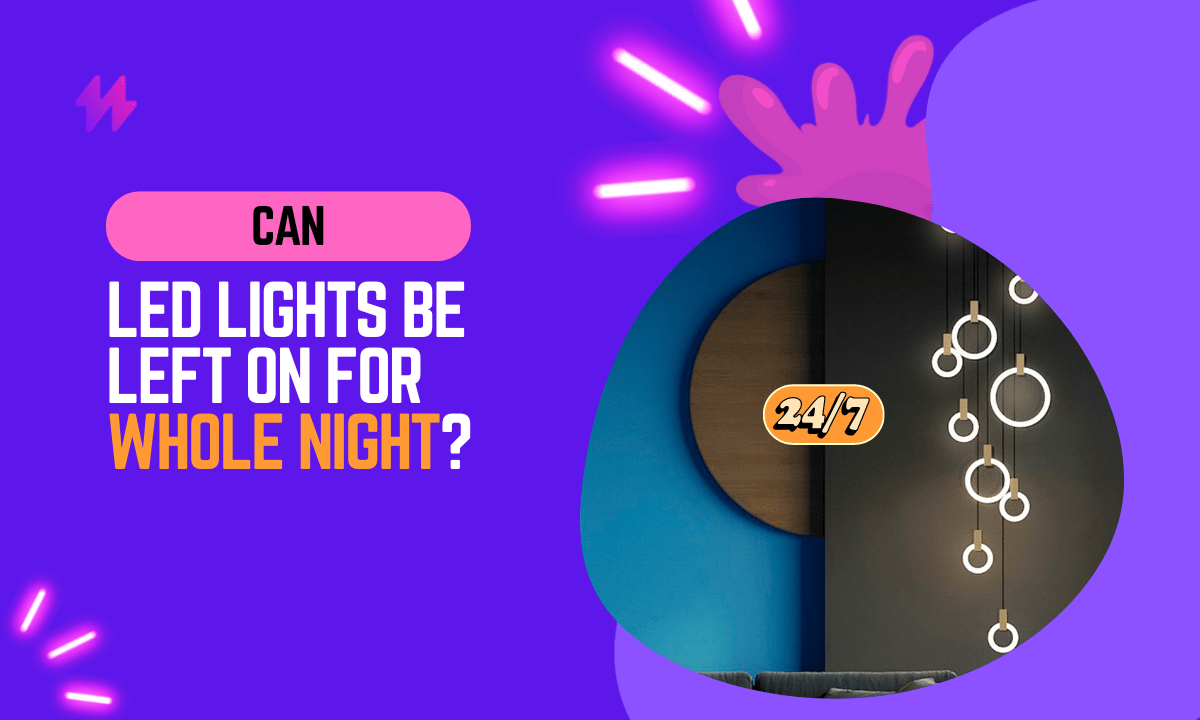
With our day-to-day lives being so hectic, it’s easy to overlook small things like turning the light off when we leave a room.
Are you curious about how LED bulbs measure up to traditional light bulbs in terms of lifespan? And just how safe it is to keep them switched on for long periods of time? I’ll be discussing all that and more in this LED guide.
Though you may think it’s not a big deal to leave your LED lights on for extended periods, there are actually several risks associated with doing so. These include environmental and safety dangers that are important to be aware of.
LED lighting solutions offer efficient and durable alternatives to traditional incandescent bulbs and fluorescent lamps. However, can LED lights be left on 24/7 and why you shouldn’t do it remains a crucial consideration for safety and energy efficiency.
Can LED Lights Be Left On 24/7 and Why You Shouldn’t Do It
LED lights are made to last a long time and can be kept on 24/7 without any problems. This is because they don’t produce much heat, so there’s no risk of them overheating or causing a fire.
Just like any other electrical device, though, there are some drawbacks. In some cases, LEDs can and will fail. So whether or not you should leave LED lights on all the time is a different question altogether.
You may also like: Can you sleep keeping LED light strips On?
While LED lights are generally safe to leave on continuously, it’s important to consider the implications of doing so on your electricity bill and potential wear over time. Utilizing proper lighting controls and automatic lighting controls can help manage usage, ensuring that your energy consumption remains efficient while you enjoy the benefits of various light sources.
Frequency of Replacing LED Lights Compared to Incandescent Bulbs
Compared to incandescent light bulbs, LED lights have a much longer lifespan. This means that you can keep them switched on for long periods of time without having to constantly replace them.
However, there is one caveat: in order for your LED bulb to last as long as it’s supposed to, you’ll need to use it properly. For example, if you leave your LED lights on 24/7 or for extended periods of time, they may not last nearly as long as they’re advertised to.
LED lights, or light emitting diodes, provide high power efficiency compared to traditional incandescent lights. Furthermore, incorporating daylight sensors can enhance the effectiveness of these solid-state lights by ensuring they operate only when necessary, helping to manage brightness in various environments.
Understanding the Risks of Leaving Your LED Lights On All Night
While they may seem like a convenient and cost-efficient option when compared to traditional light bulbs, there are some important things you should be aware of before making the switch.
One of the main reasons why you should avoid leaving your LED lights on 24/7 is that they can cause harm to the environment. Because LEDs use less energy and don’t produce as much heat, they can be harmful to our planet’s ecosystems if used excessively.
Another reason you should avoid keeping your LED lights on all night is that they can compromise your safety. In some cases, over-exposure to LED light may cause eye strain and disrupt your sleep cycle, potentially increasing your risk of accidents or injury.
So while LED lights can offer many benefits in terms of cost and efficiency, it’s important that you use them properly to ensure their safety and longevity. By following these tips, you’ll be able to get the most out of your LED lights without having to worry about any negative consequences.
When it comes to artificial lights, understanding their impact on our daily lives is essential. Blue light emitted by LED lightbulbs can disrupt sleep patterns, making it vital to manage exposure, especially during evening hours when darkness sets in.
Understanding the Safe Duration for Keeping a Light Bulb On
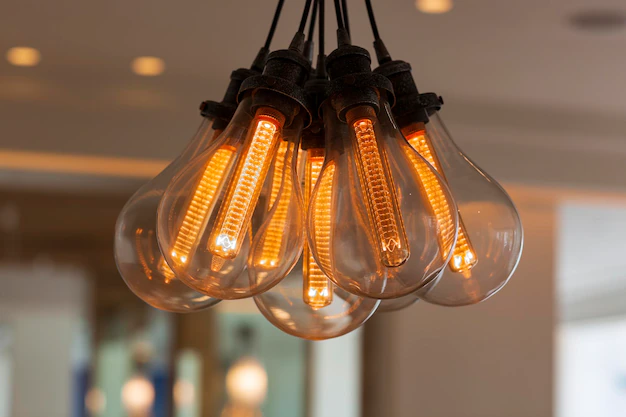
There is no definitive answer to this question, as it will depend on a number of different factors. Generally speaking, however, most light bulbs are designed to last for a certain period of time before they need to be replaced.
Some light bulbs are known to burn out quickly, while others may last for many years before needing to be replaced. Factors such as the type of bulb, its quality, and how often it’s used can all affect its lifespan and safety.
Life Span based on Bulbs:
- LED Bulbs: 35,000 – 50,000 hours
- Incandescent: 750 -2,000 hours
- Fluorescent: 24,000 – 36,000 hours
- Halogen: 2,000 – 4,000 hours
- CFL: 35,000 – 50,000 hours
That said, there are some general guidelines you can follow in order to ensure that your light bulbs don’t overheat or pose any other safety risks.
- You should always leave at least 10 inches between your lights and any flammable objects like curtains or furniture.
- It’s also important to make sure that your LED lights are installed properly and not near any water sources, as this can also lead to overheating and potential fire risks.
- In addition, you should avoid using multiple strip lights in a single room at the same time for long periods of time.
In addition, it’s best to avoid using multiple light bulbs in a single room at the same time for long periods of time. This is especially true for LED lights, which tend to produce a lot of heat if left on for too long. And if you notice that any of your light bulbs are flickering or seem unusually hot, you should consider replacing them right away.
There are different types of bulbs, such as CFL bulbs and LED lights, each with distinctive characteristics regarding energy consumption in watts. Understanding how long you can leave individual light bulbs on depends on their wattage and whether they are designed to handle continuous use without flashing or overheating.
Is It Safe to Keep LED Lights On Continuously 24/7?
While LED lights can technically be left on for 24 hours, it is a waste of resources if they are not being used. LED lights are known for their efficiency, using less energy and emitting less heat than traditional light bulbs. However, this comes at the cost of shorter lifespans if they are left on constantly.
Many users appreciate that LED lights reach full brightness almost instantly, making them a popular choice for both residential and commercial settings. However, it’s important to remember that prolonged usage can lead to early degradation, where constant exposure to light suppresses their longevity.
Understanding How Long You Can Leave LED Strip Lights On
There is no definitive answer to this question, as it will depend on a number of different factors. Generally speaking, however, most LED strip lights are designed to last for a certain period of time. Some strip lights can have lifespans as long as 50,000 hours, while others may only last for around 24,000 hours.
In evaluating LED lighting solutions, longevity and efficiency are key considerations for consumers. Therefore, choosing the right type of LED strip lights can significantly impact your energy consumption and overall satisfaction with your lighting.
Conclusion: Key Takeaways on LED Light Usage
In conclusion, while LED lights are celebrated for their energy efficiency and long lifespan, leaving them on continuously, 24/7, is not advisable for several reasons. First, even though LEDs are more durable and longer-lasting than traditional lighting options, constant operation can significantly reduce their lifespan. Continuous use can lead to overheating, which not only damages the light-emitting diodes but can also weaken the soldering that holds the components of the LED chip together. This accelerated wear and tear mean replacing them more frequently than necessary, which diminishes one of the primary benefits of LED technology—its cost-effectiveness and low maintenance.
Moreover, constant illumination when not needed contributes to unnecessary energy consumption, which, while smaller on a per-unit basis, adds up over time. This not only increases energy bills but also contributes to a larger environmental impact than necessary. Implementing sensible usage patterns such as turning lights off in unoccupied rooms or using timers and sensors can maximize energy efficiency and reduce costs. Additionally, constant light exposure, especially during night-time hours, can disrupt natural circadian rhythms in humans and animals alike, potentially leading to health issues. Thus, while LEDs are an excellent lighting choice for both homes and businesses due to their efficiency and the quality of light they produce, like all resources, they should be used responsibly and thoughtfully to maximize their lifespan and energy-saving potential while minimizing their impact on the environment and health.
Can LED Lights Be Left On 24/7 And Why You Shouldn’t Do It | The Impact of Leaving LED Lights On 24/7
Leaving LED lights on 24/7 may seem convenient, but it has significant implications on both energy consumption and overall costs. Can LED lights be left on 24/7 and why you shouldn’t do it? The continuous use of these lights leads to higher electricity bills, which can accumulate over time, negating some of the energy efficiency benefits that LED technology offers. Beyond the financial strain, prolonged usage can also cause potential damage to the bulbs themselves, affecting their longevity and performance. Understanding the impact of leaving LED lights on constantly is crucial for making informed decisions about lighting in your home or business.
Can LED Lights Be Left On 24/7 And Why You Shouldn’t Do It | Energy Consumption and Cost Implications
Leaving LED lights on 24/7 may seem like a convenient option, but it can lead to significant energy consumption and increased costs over time. Although LED lights are more energy-efficient than traditional bulbs, they still draw power continuously when left on. This habit can result in higher electricity bills and negatively impact your budget. Understanding “Can LED Lights Be Left On 24/7 And Why You Shouldn’t Do It” involves recognizing these economic implications.
Energy efficiency is crucial for both your finances and the environment. While LED lights have a longer lifespan compared to other lighting options, continuous usage can still contribute to wear and tear. Learning the answer to “Can LED Lights Be Left On 24/7 And Why You Shouldn’t Do It” highlights the importance of mindful lighting habits. By turning off lights when they’re not needed, you can save money and prolong the life of your bulbs.
Potential Damage to LED Lights Over Time
Leaving LED lights on continuously can cause premature wear and tear. The heat generated during constant operation can lead to a decrease in both brightness and efficiency over time. This diminishes the lifespan of the LEDs, ultimately resulting in more frequent replacements and negating the investment in energy-efficient lighting. Understanding the implications of “Can LED Lights Be Left On 24/7 And Why You Shouldn’t Do It” is crucial for extending their longevity.
Over time, continuous use may also affect other components of the lighting system. For example, the driving circuitry can become stressed, leading to potential failures. This raises concerns about the overall reliability of the fixtures you rely on for illumination. Recognizing the answer to “Can LED Lights Be Left On 24/7 And Why You Shouldn’t Do It” not only informs your usage habits but also helps in maintaining a safe and cost-effective lighting environment.
Alternative Lighting Options
Exploring alternative lighting options can provide solutions for those considering the implications of keeping lights on continuously. Many consumers wonder, “Can LED Lights Be Left On 24/7 And Why You Shouldn’t Do It?” Beyond the energy consumption and potential damage to the fixtures, other lighting technologies, such as smart lighting solutions, present advantages. Smart lighting can be programmed to turn off when not needed, leading to reduced energy costs and extended lifespan, addressing concerns related to leaving LED lights on all day and night. By comparing LED lights to these emerging technologies, one can make informed choices that balance efficiency and functionality.
Benefits of Smart Lighting Solutions
Smart lighting solutions offer advanced features that enhance energy efficiency and convenience. With the capability to schedule lighting based on occupancy or time of day, users can avoid unnecessary energy consumption. This directly addresses concerns like “Can LED Lights Be Left On 24/7 And Why You Shouldn’t Do It.” By automatically adjusting brightness and turning off lights in unoccupied spaces, smart systems significantly reduce energy bills.
These systems also allow for remote control and automation through smartphone apps or voice commands. This means users can easily manage their lighting from anywhere, reducing the likelihood of leaving lights on unintentionally. Understanding the implications of leaving lights on continuously, like in the question of “Can LED Lights Be Left On 24/7 And Why You Shouldn’t Do It,” reinforces the value of adopting smart technology for a more sustainable and user-friendly lighting experience.
Comparing LED Lights to Other Lighting Technologies
LED lights are known for their energy efficiency and long lifespan, particularly when compared to traditional incandescent and fluorescent lighting technologies. While many users may ponder, “Can LED Lights Be Left On 24/7 And Why You Shouldn’t Do It,” understanding the cost efficiency of LEDs is crucial. They consume significantly less energy than incandescent bulbs, resulting in lower electricity bills, even if left on for extended periods. However, the question remains whether continuous use is truly advisable.
Other lighting technologies, such as CFLs or incandescent bulbs, have shorter lifespans and higher energy costs. While LEDs boast a much longer operational life, leaving them on constantly can still lead to potential thermal wear over time. This raises concerns about durability and performance. As a homeowner, it’s essential to weigh these factors, along with energy consumption, to determine the best practices for your lighting needs. The inquiry of, “Can LED Lights Be Left On 24/7 And Why You Shouldn’t Do It,” highlights the necessity of understanding both the benefits and limitations of LED technology in everyday scenarios.
Maintenance Tips for LED Lights
Proper care and maintenance of LED lights can significantly extend their lifespan, addressing concerns related to “Can LED Lights Be Left On 24/7 And Why You Shouldn’t Do It.” Regular cleaning to remove dust and debris is essential, as buildup can hinder performance and lead to overheating. It’s important to avoid leaving LED lights on continuously, as doing so may not only increase energy costs but also accelerate wear and tear. Understanding the implications of prolonged usage helps in making informed decisions about when to replace your LED lights, ensuring optimal functionality and efficiency.
Proper Cleaning and Care for Longevity
Regular cleaning of LED lights is essential for maintaining their brightness and efficiency. Dust and grime can accumulate on the surface, diminishing light output and creating hotspots. Neglecting proper care can lead to overheating, which negatively impacts the lifespan of the bulbs. This is particularly important to consider in the context of the question, “Can LED Lights Be Left On 24/7 And Why You Shouldn’t Do It?” Prolonged usage combined with poor maintenance can exacerbate any pre-existing issues.
Using a soft, dry cloth to wipe down the fixtures can help prevent any buildup. For more stubborn stains, a slightly damp cloth with mild soap works well without risking damage to the components. Understanding how to care for your lights can improve their longevity and performance. Taking these steps is crucial, especially in light of potential mishaps associated with constant use. It is wise to remember the implications of leaving LEDs on continuously, which makes proper care even more vital.
When to Replace Your LED Lights
Understanding the lifespan of LED lights is essential to determine when they need replacement. Regular use, especially if you ponder, “Can LED lights be left on 24/7 and why you shouldn’t do it,” comes into play here. Extended hours of operation can lead to gradual deterioration of performance, impacting brightness and color quality. Observing flickering or diminished luminosity can be a clear sign that your LED lights have reached the end of their effective lifespan.
Noting the manufacturer’s specifications can guide your decision on replacement. LED lights generally last between 15,000 and 50,000 hours, depending on the quality and usage. Knowing how frequently you’re using them ties back to the question, “Can LED lights be left on 24/7 and why you shouldn’t do it.” If lights are regularly kept on continuously, replacing them sooner may be necessary to maintain optimal light output and efficiency.
Conclusion
Leaving LED lights on 24/7 can lead to increased energy consumption and higher electricity bills. While LED technology is designed to be energy-efficient, continuous usage can still accumulate costs over time. The longevity of LED lights may also be compromised by constant operation. This raises the question, “Can LED lights be left on 24/7, and why shouldn’t you do it?” By understanding the energy implications and potential damage, individuals can make informed decisions about their lighting habits.

